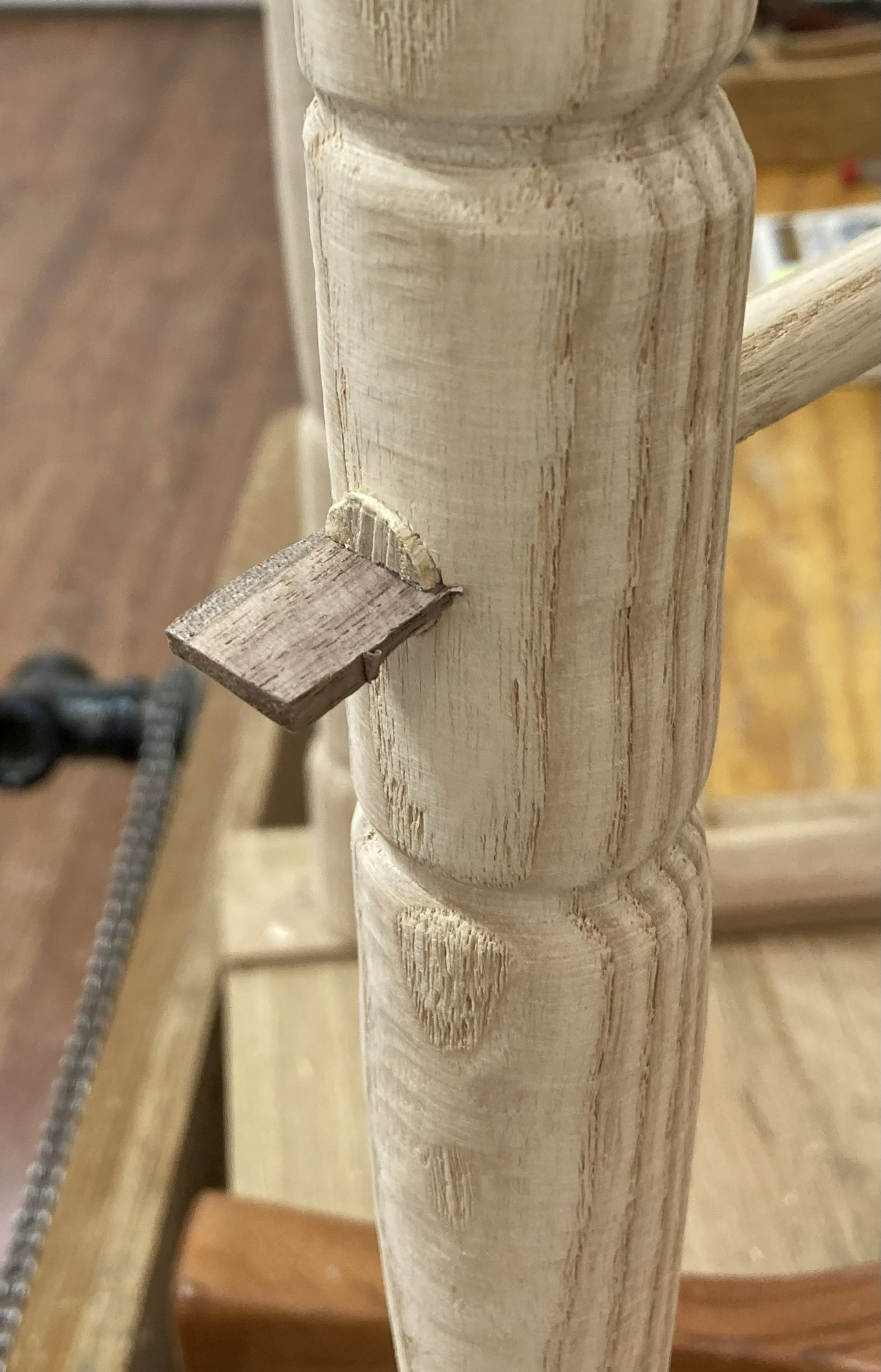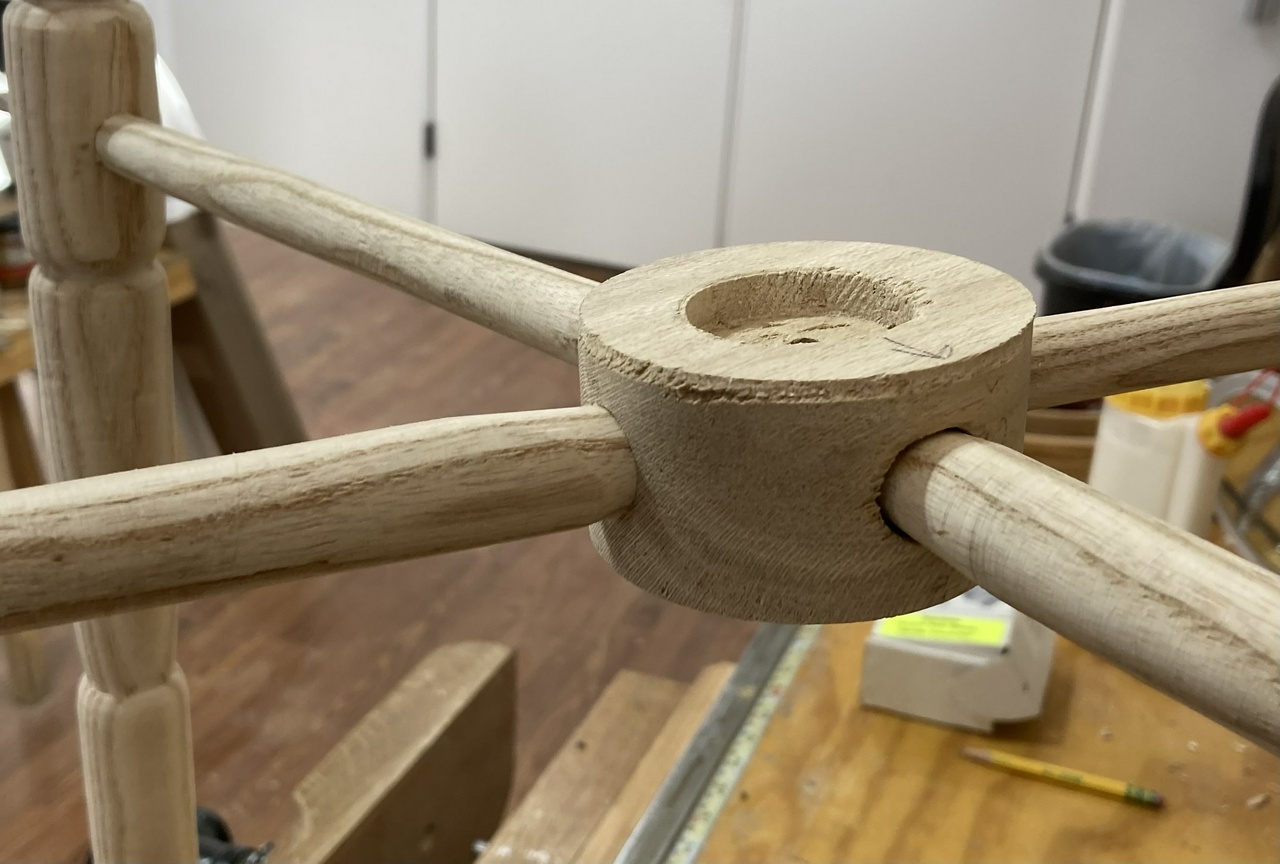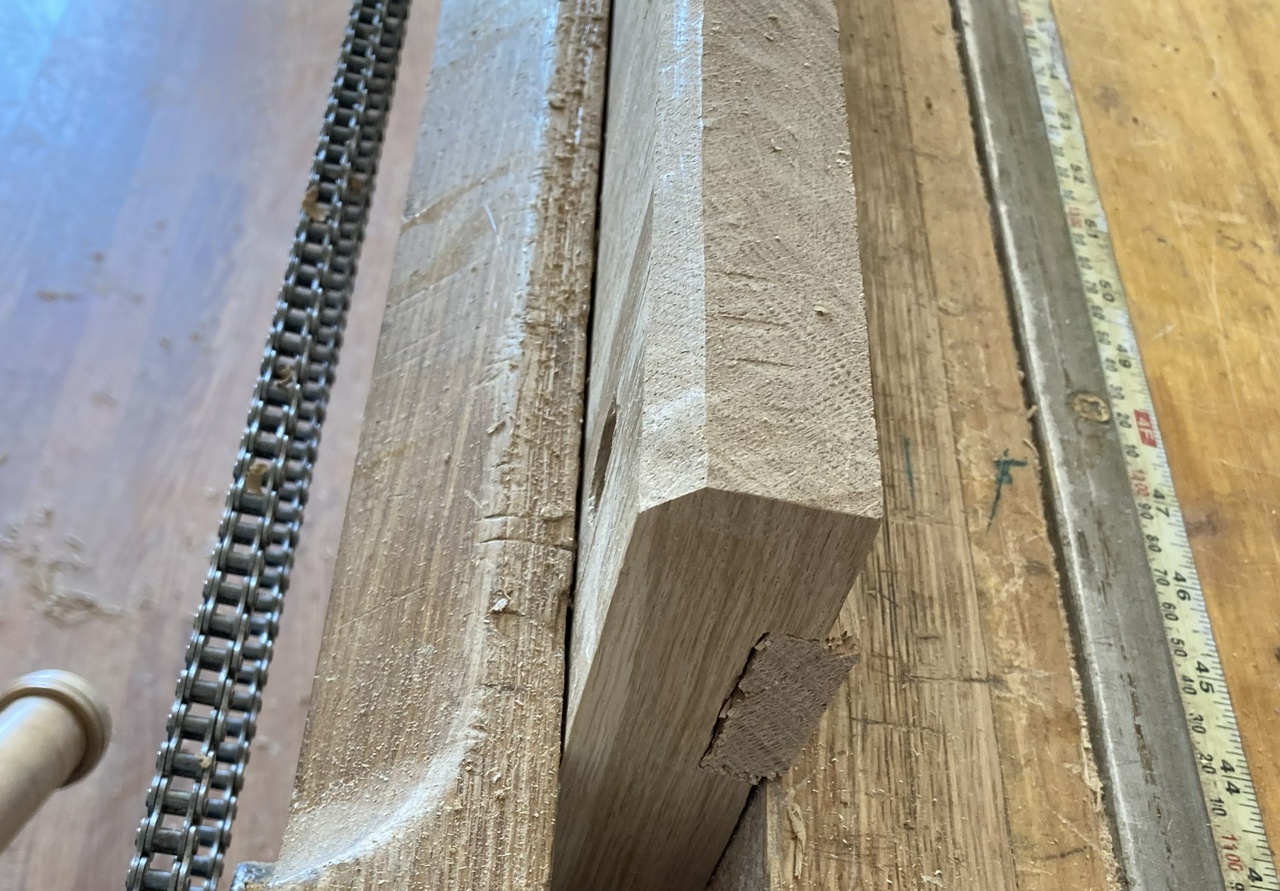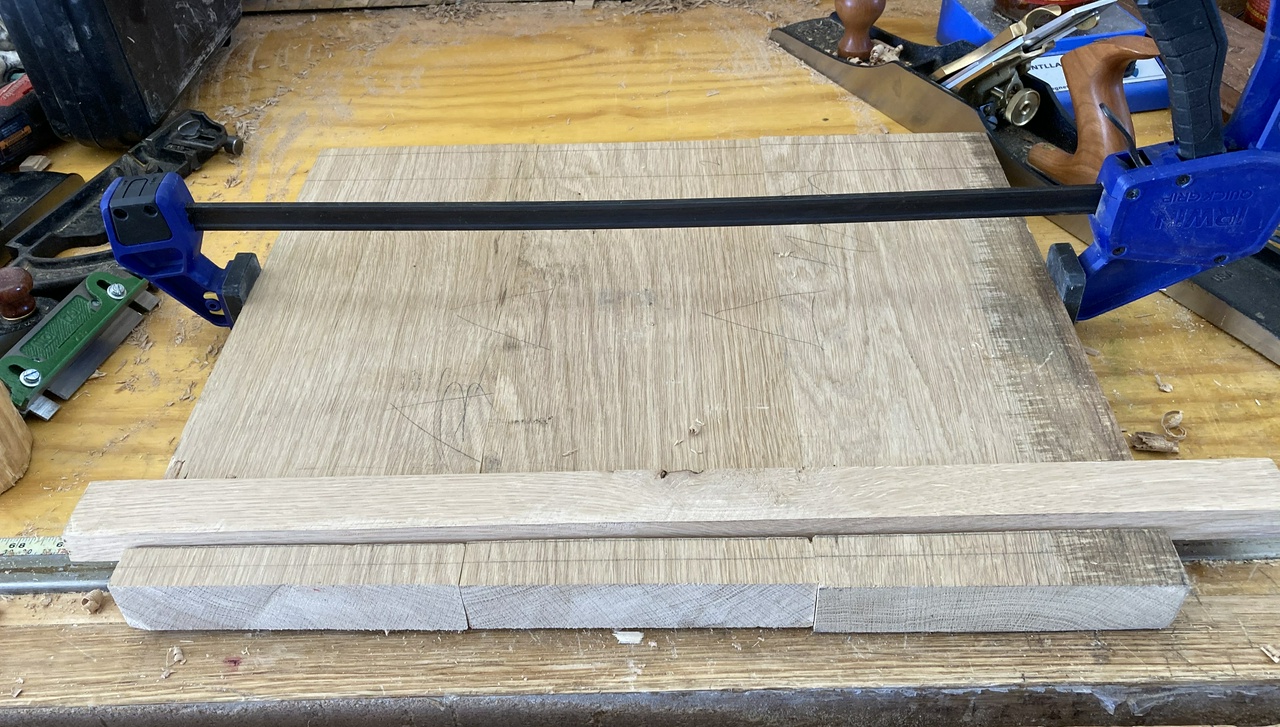Forge Table – #10 Wrapping it up
Today got the forge table across the finish line. I had a piece of aluminum diamond plate cut to roughly the right size, and today was the day it got attached to the table-top.
First up was figuring out how to bend it. I settled on clamping the bent edge in my twin-screw vise, then using a little 2-pound maul to hammer the main part of the plate flat onto my bench. It went pretty smoothly, except on the first corner, I couldn't figure out which way to cut off the metal for the corner, so I did both. The other corners got cut correctly and folded over the edge, and then I got out a drill and a handful of brass screws and screwed the metal onto the table-top.

Once things were screwed down, I used my hammer to round the corners, then filed off any stabby bits, cleaning the edges up so I won't hurt myself when I try to move the table.

And with that, the table is done, I think.

As one of my buddies commented, Kind of a 19th Century/modern fusion, truck-box chic!
Contents #woodworking #ForgeTable
Discuss... Reply to this in the fediverse: @davepolaschek@writing.exchange






























